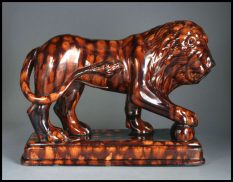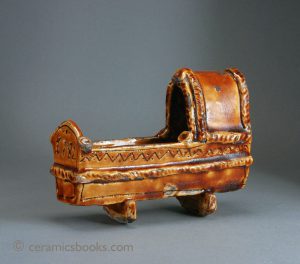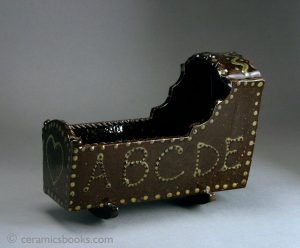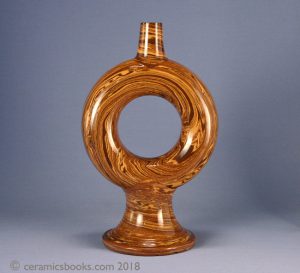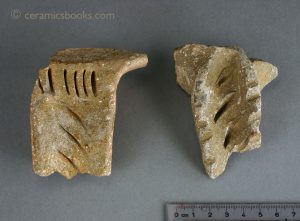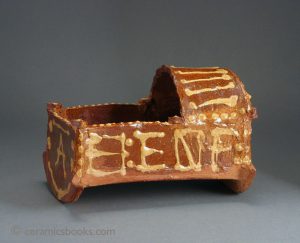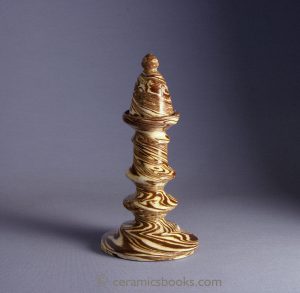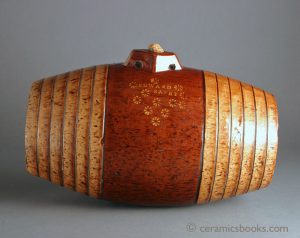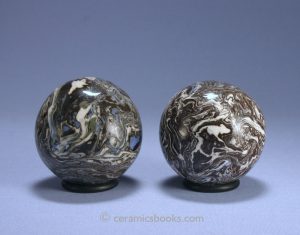Earthenware (Country Pottery)
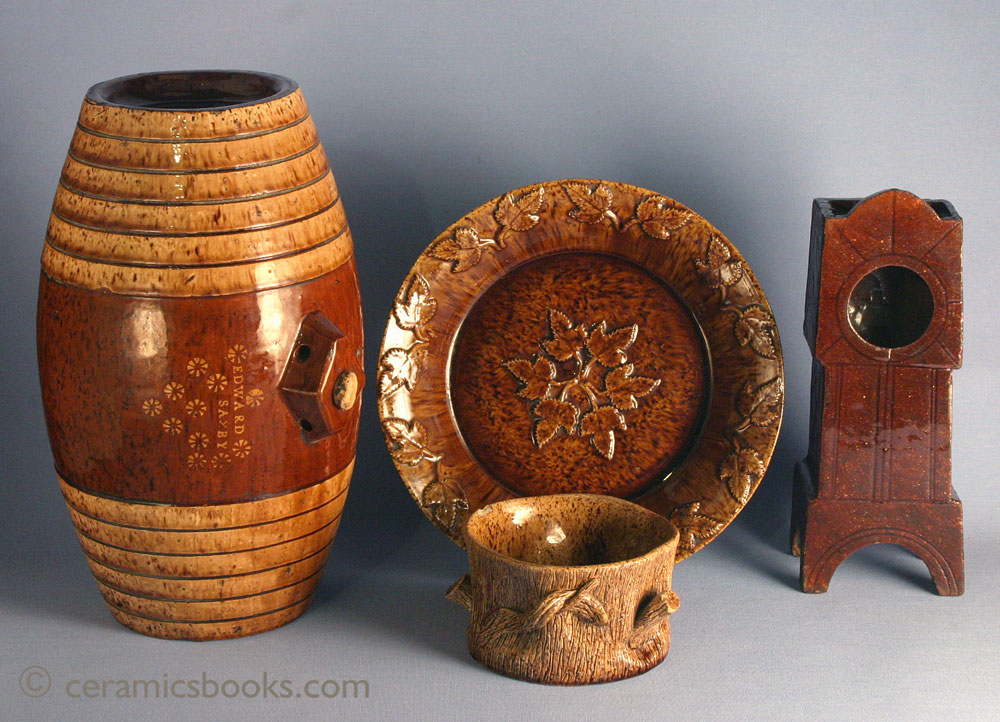
Earthenware includes non-
Alongside these utilitarian wares some potters also produced special one-off pieces such as pottery cradles and moneyboxes etc., to celebrate births, marriages, and other events. These commemorative pots were often made for the potter’s own family and friends and are very rare.
Later in the C19th some country potteries sought to survive the growing industrialisation of pottery production by producing art wares.
Earthenware as a potting term refers to pottery that is fired to below porcelain or stoneware temperatures; typically earthenware would therefore mean any ceramic body fired up to a maximum of around 1150 degrees centigrade (about 2100 degrees Fahrenheit) that has not vitrified.
Most country pottery was usually lead-glazed over a terracotta type body but may include slip decoration or agate ware (mixed coloured clays) or incised (sgraffito) decoration etc..
